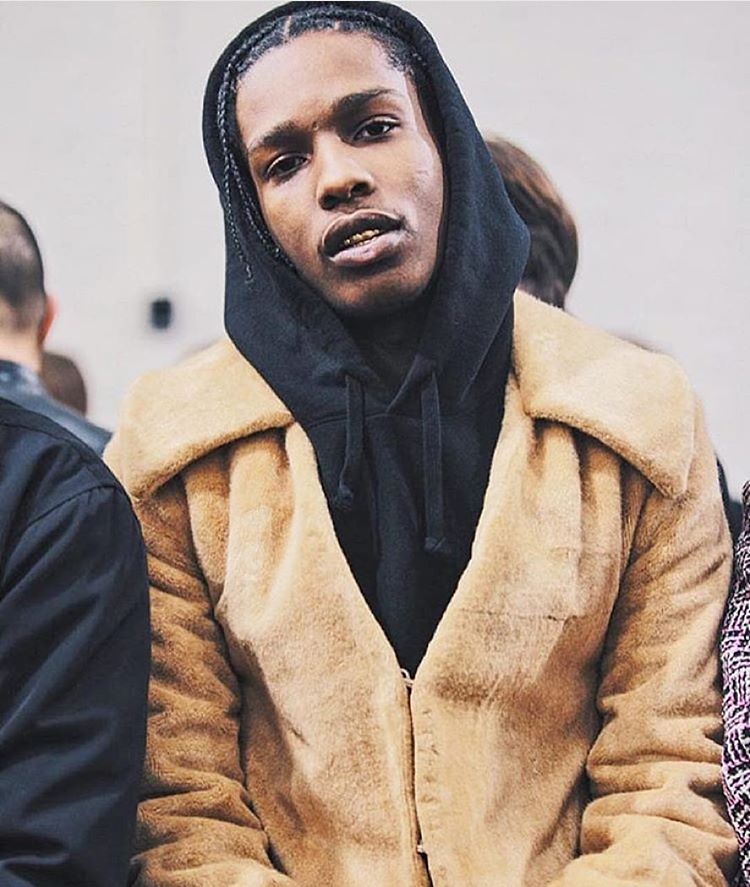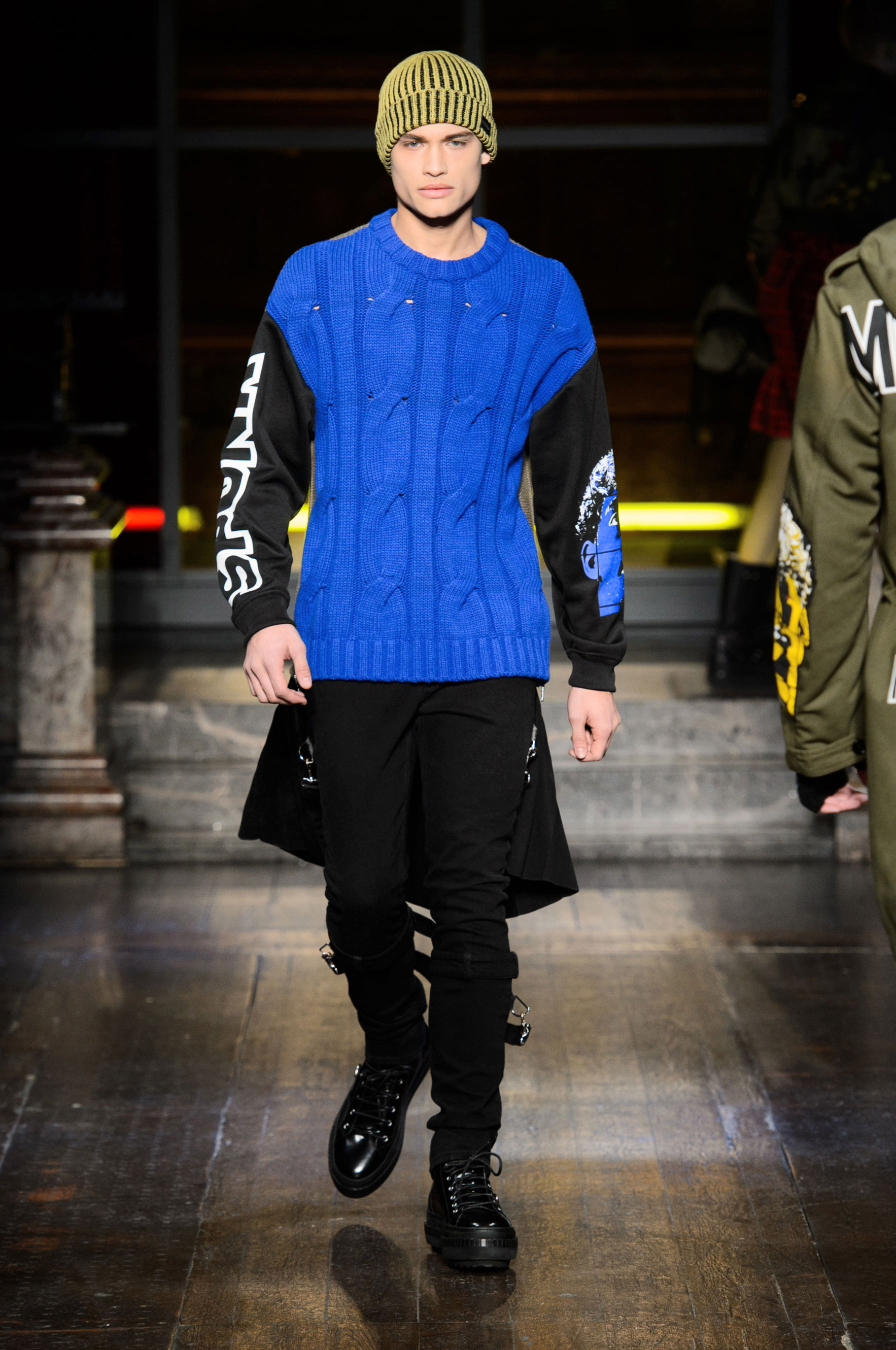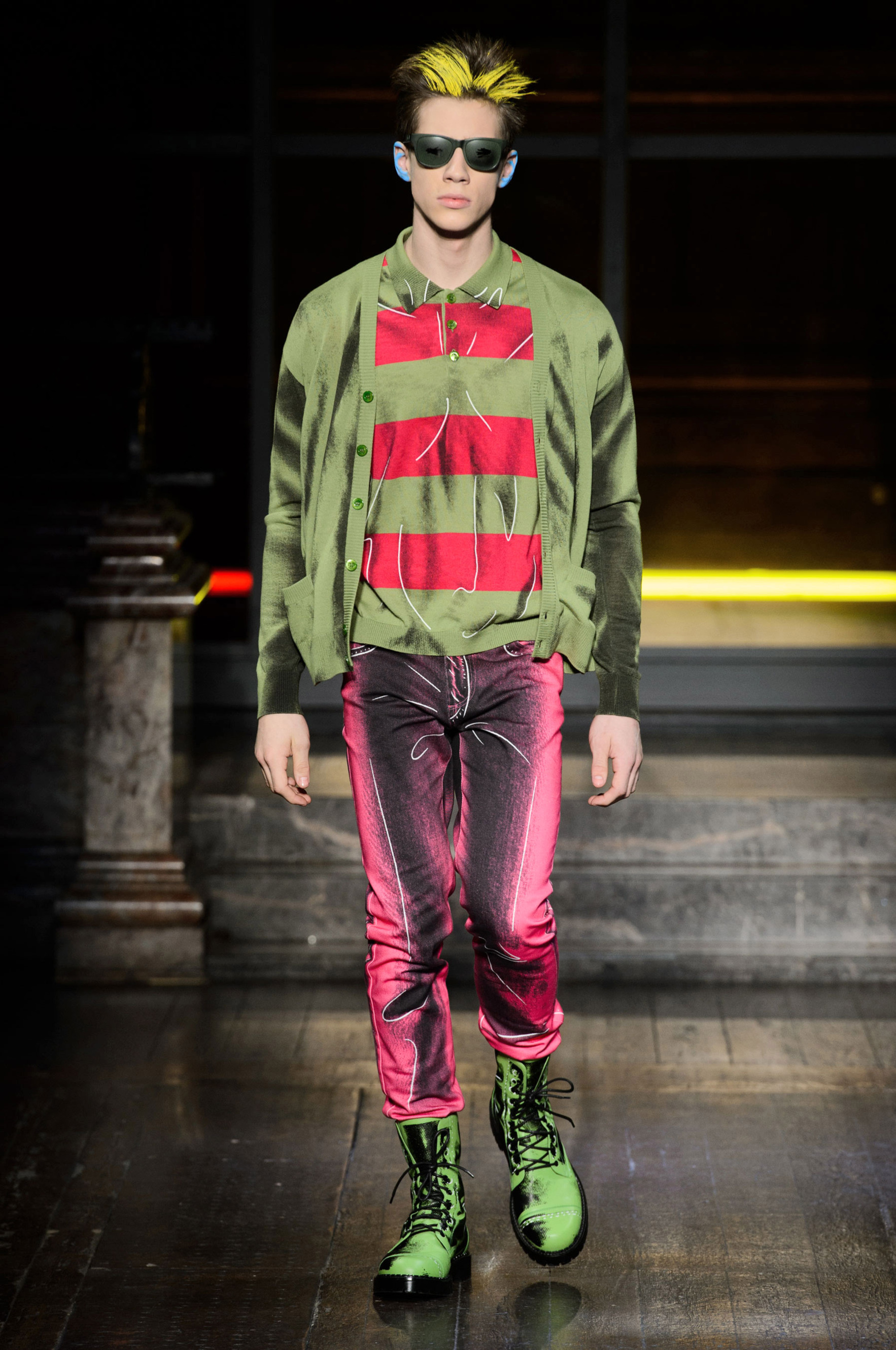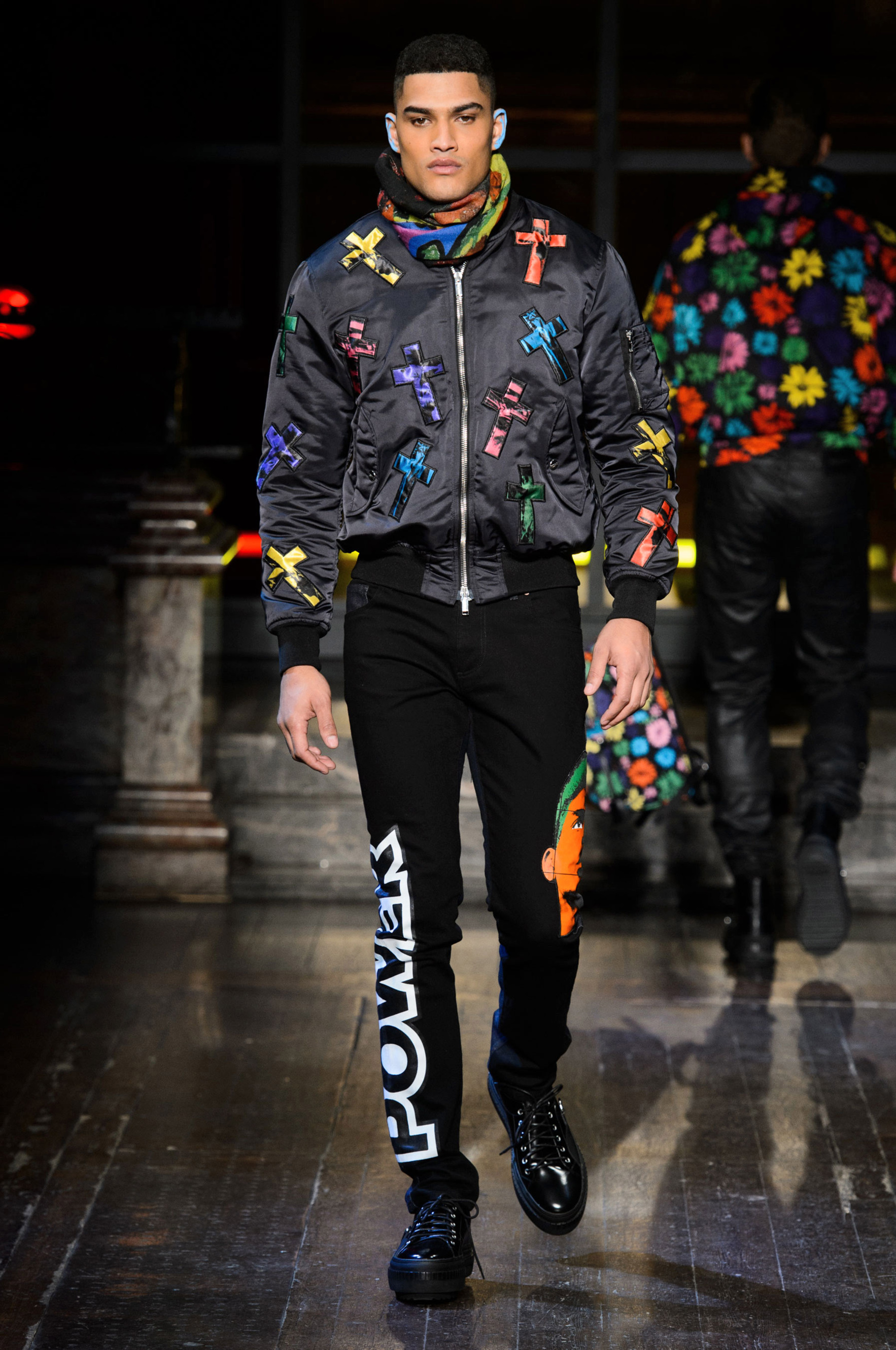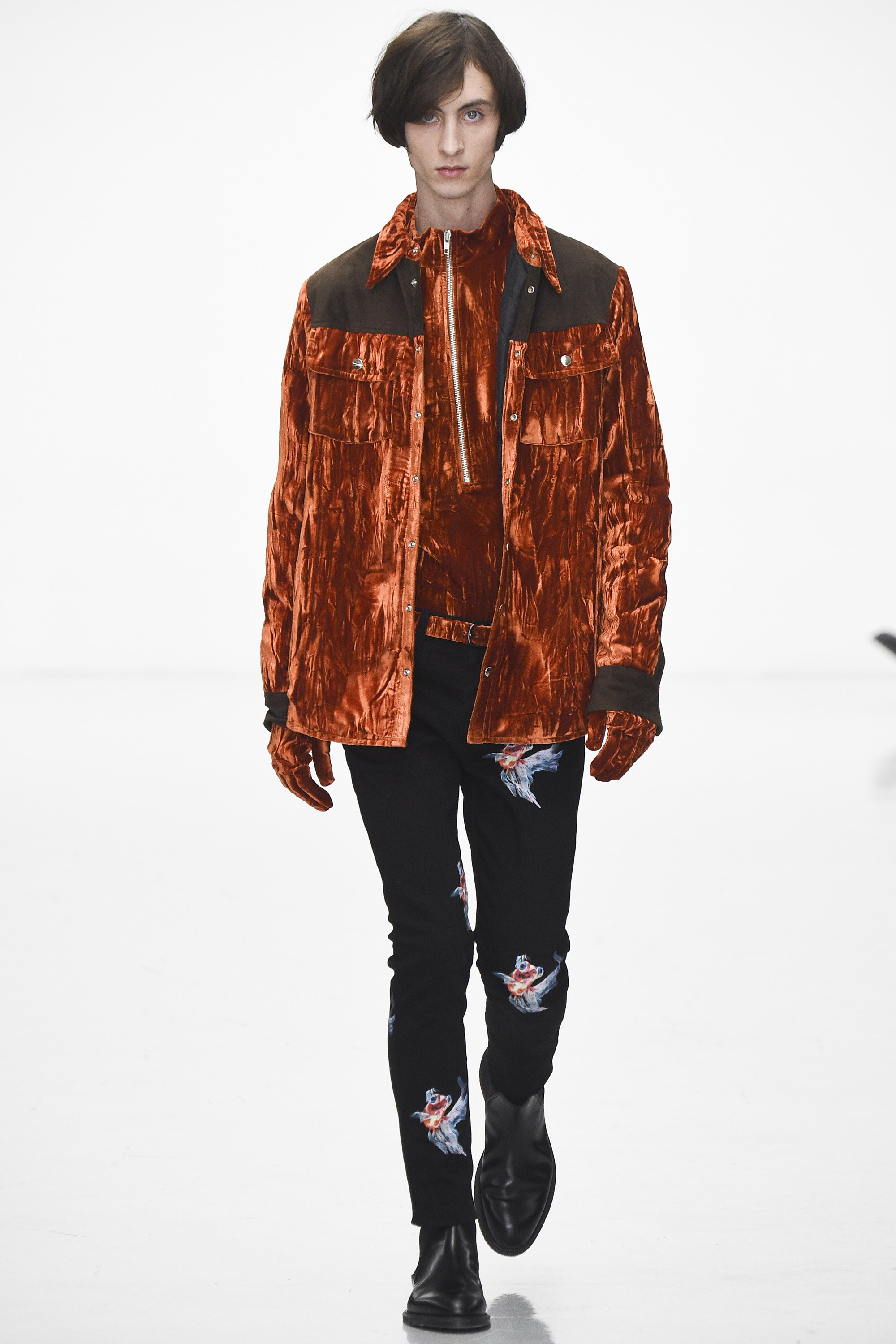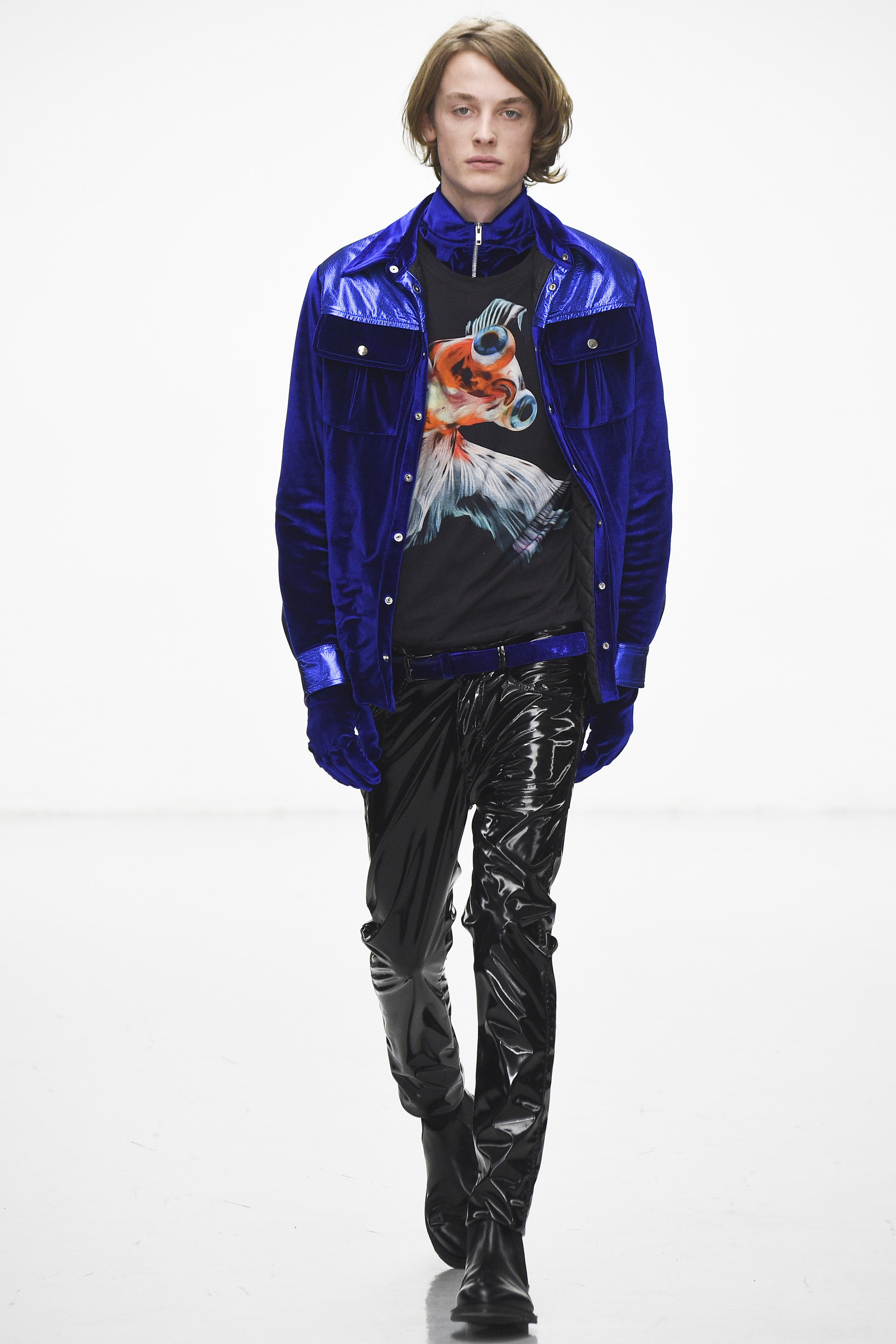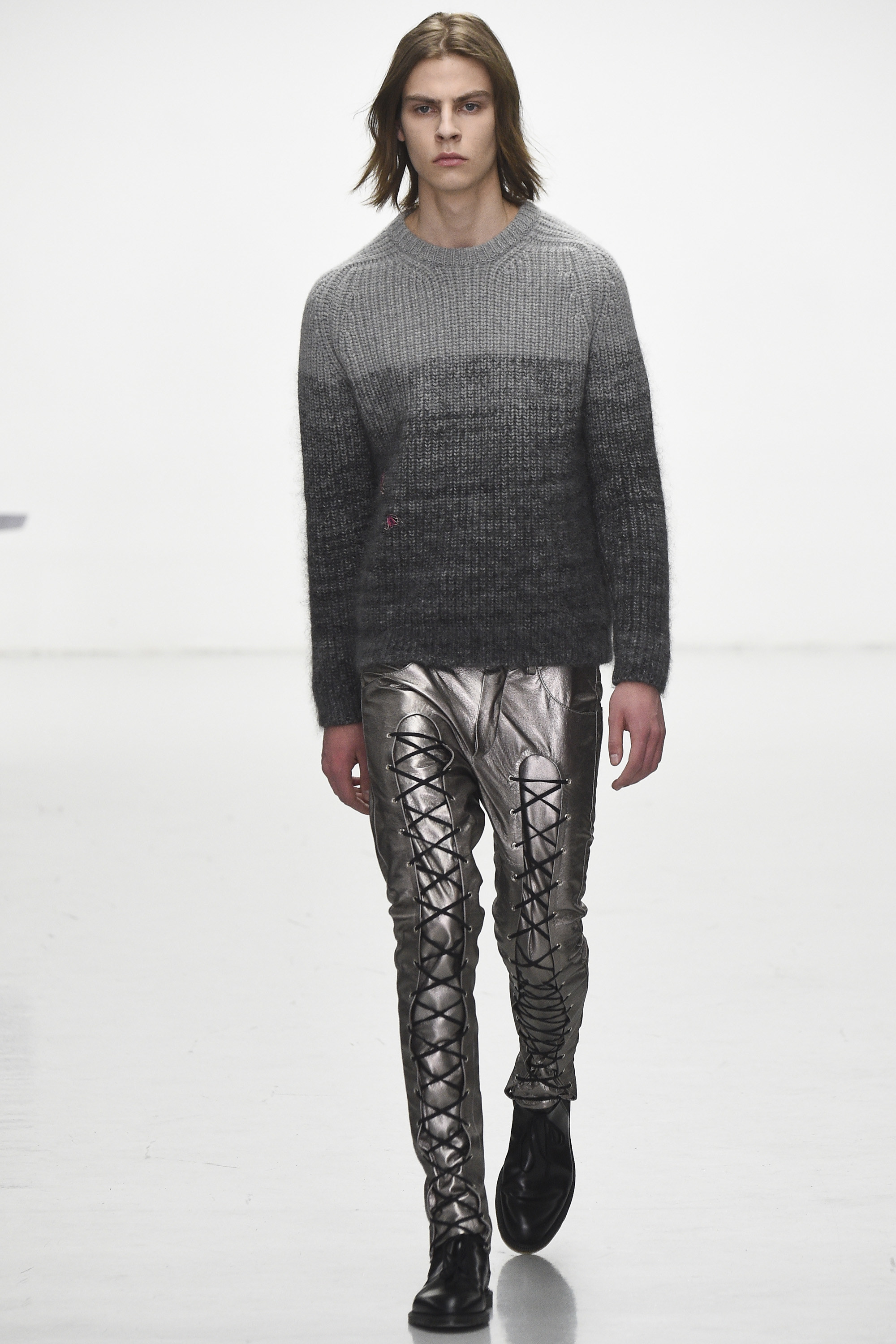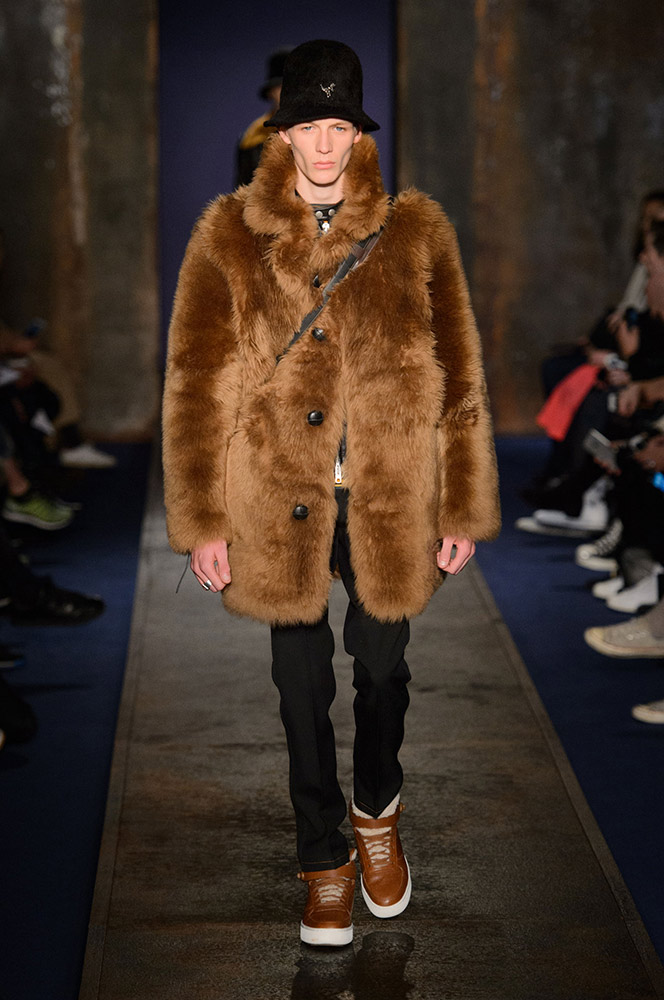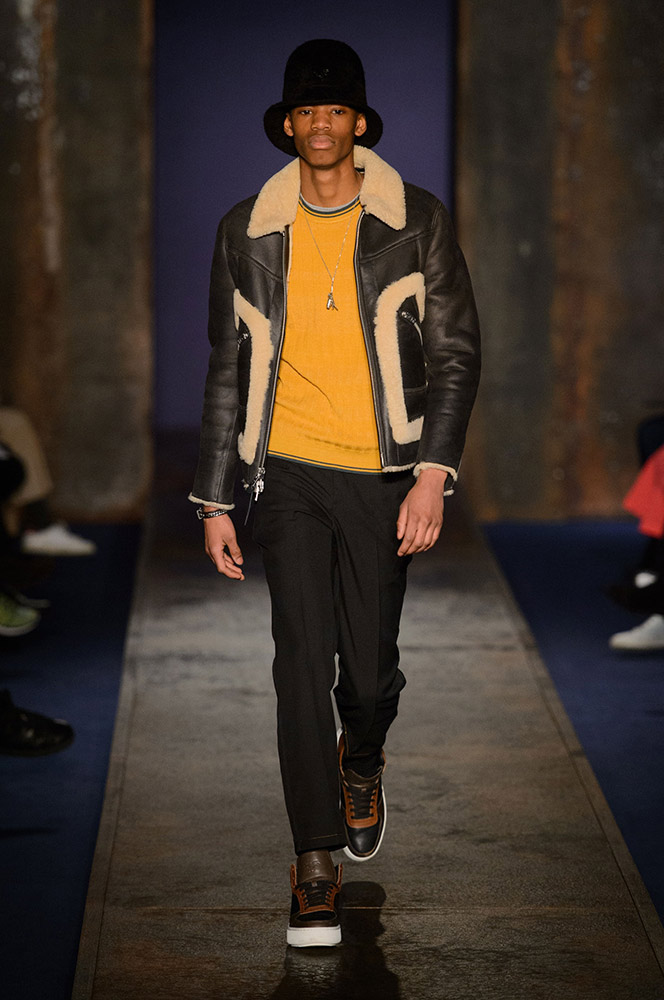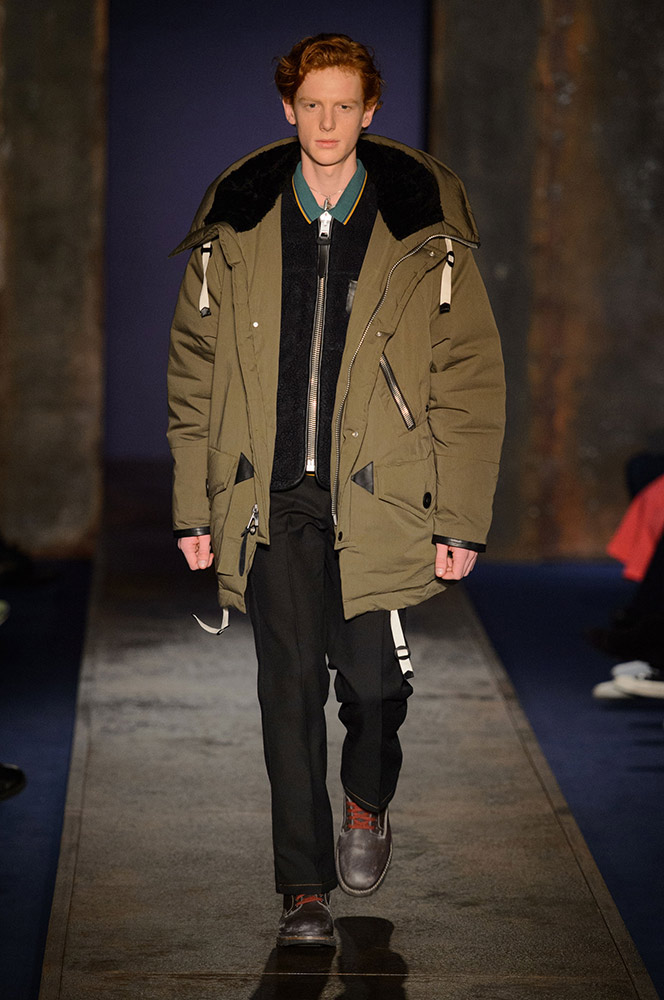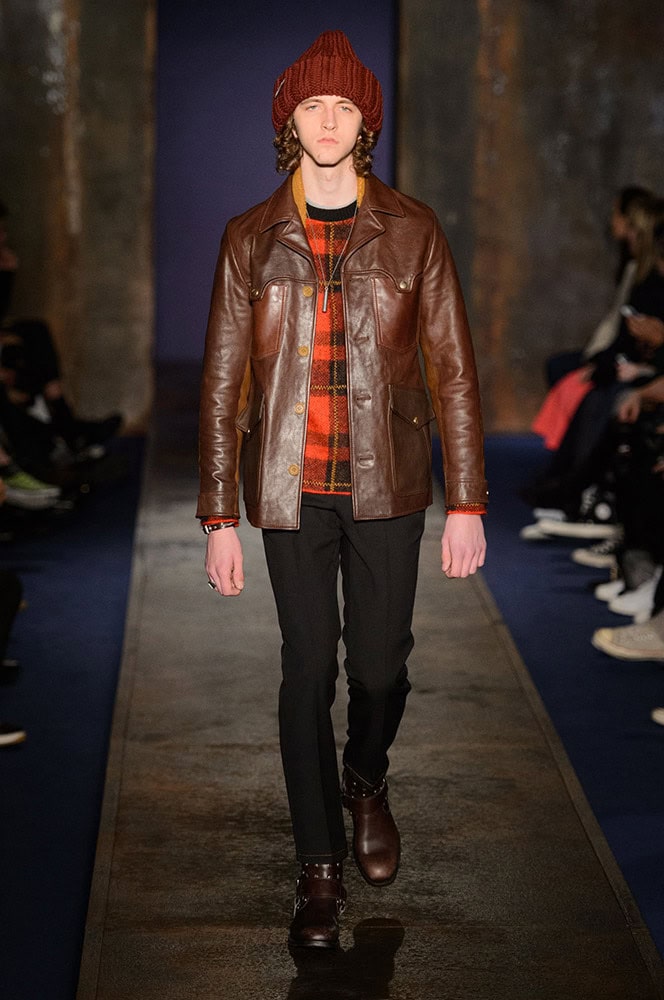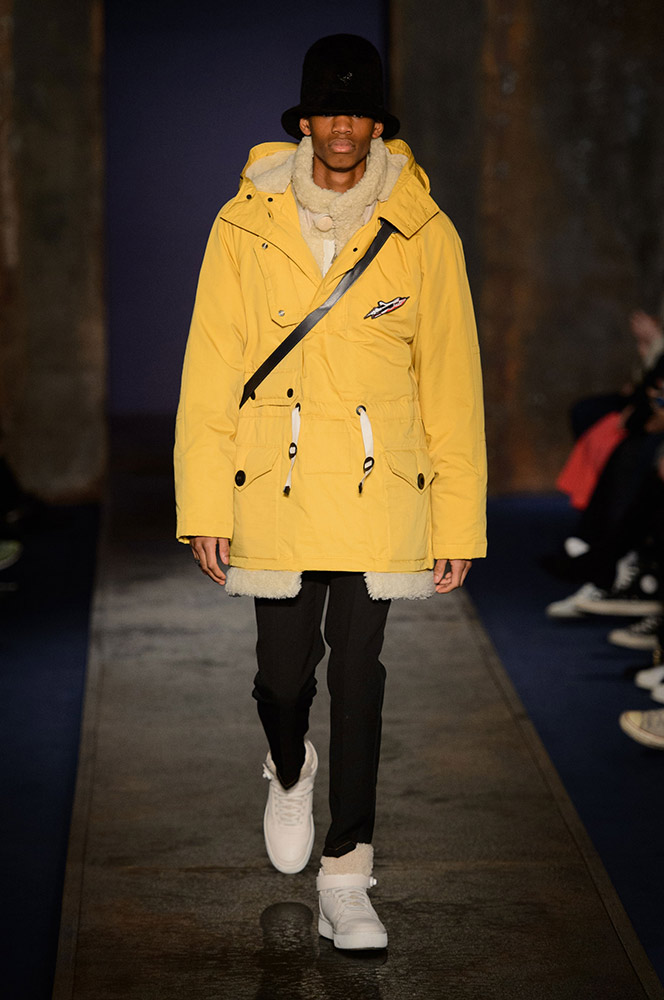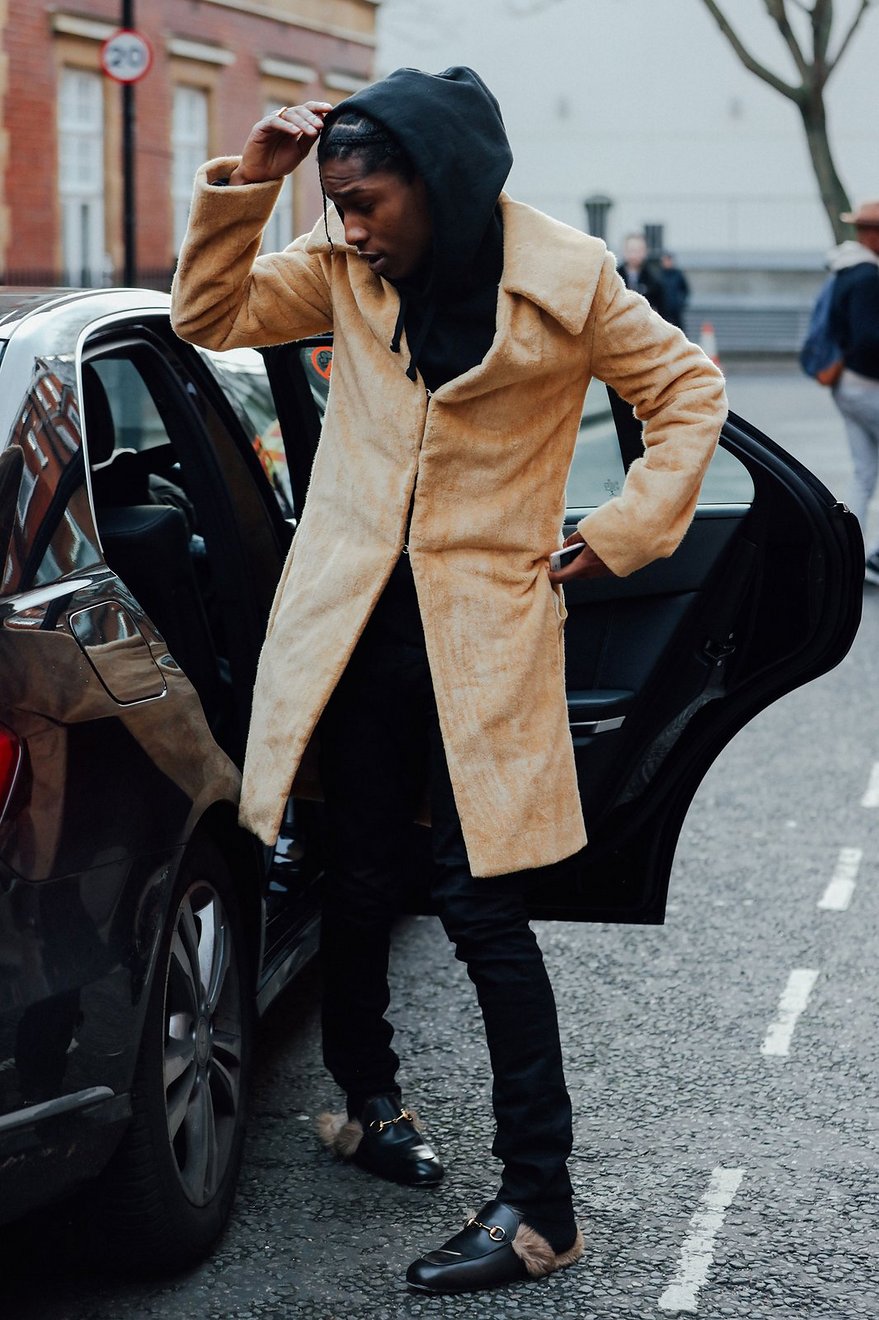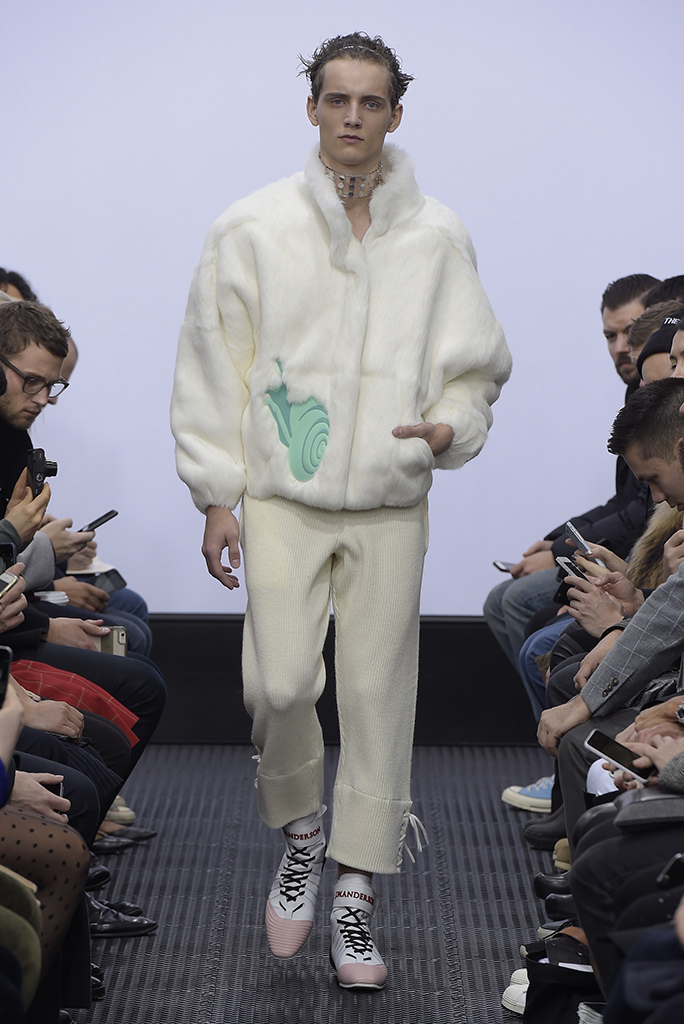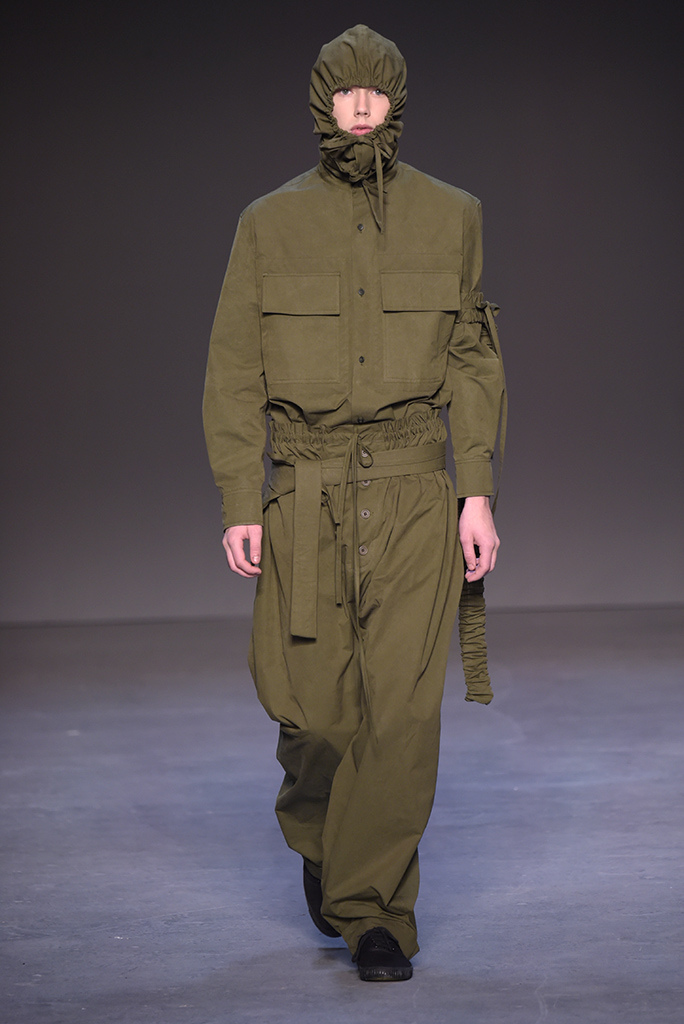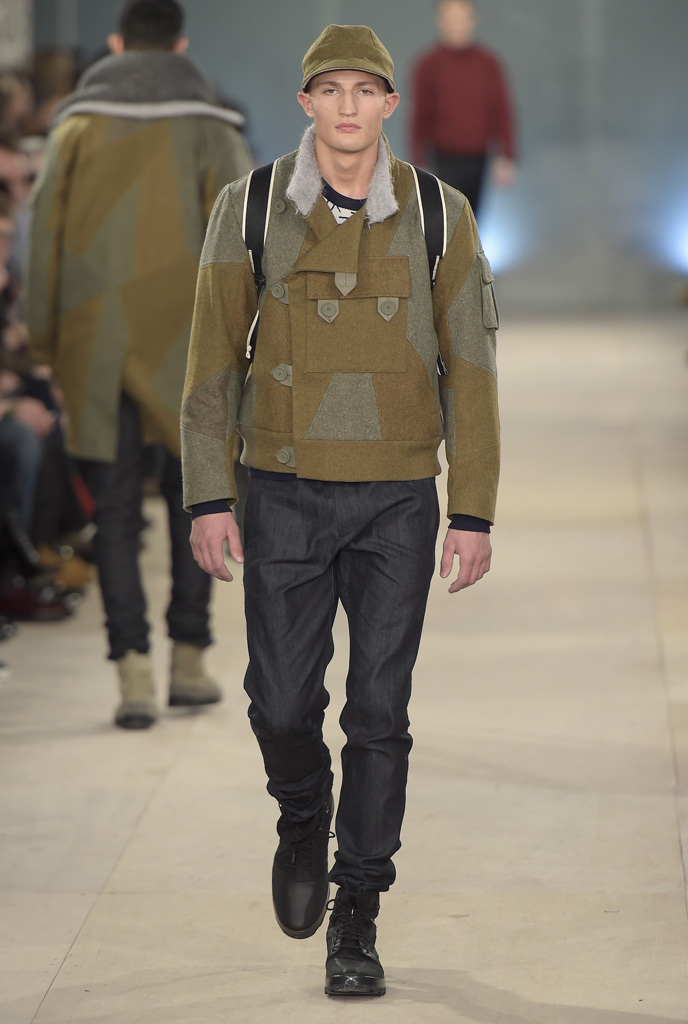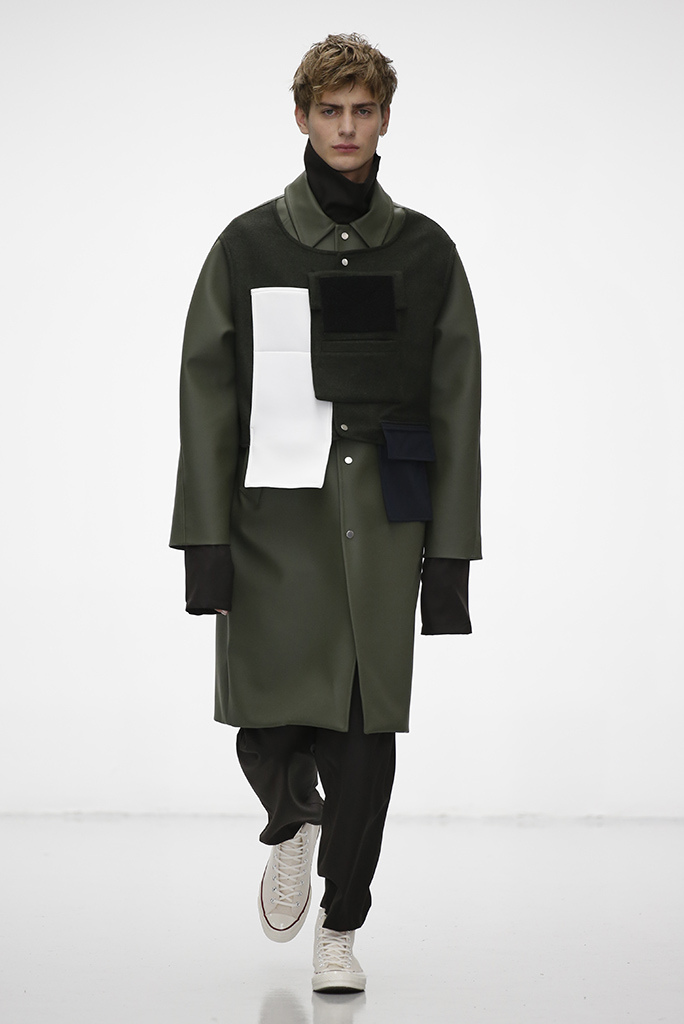Front Row
London Men’s Fashion Week 2016 was a hodgepodge of long hair, precisely constructed boxy tailoring, military themed wear and streetwear inspired runway pieces with advanced textures. Hard to impress fashion scrutinizers such as Asap Rocky, Taboo from the Black Eyed Peas and Kid Cudi all filed into seating surrounded by members of the style elite. Artists and attendee alike watched as a host of designers invited crowds to peeks of their creatively charged design visions. Labels such as Jeremy Scott’s Moschino and KTZ offered thoroughly luxurious fun with complete Instagram complementation, while fashion entities like Coach, Katie Eary and Burberry pulled from style rich periods of the past in which Instagram at fashion week was simply unfathomable.
While some designers are more steeped in offering subtle stylings, there was a handful of brands that chose to indulge in presentations of jubilance and fun. Master of utterly entertaining fashion, Jeremy Scott let loose a Moschino collection that visually enthralled viewers with all the options of the color wheel. Inspired by contemporary art innovators Gilbert & George, Scott designed a Fall/Winter collection ripe with his signature pop culture appeal in conjunction with the pair. The celebrity did so from a decidedly thorough and imaginative perspective, with pieces such as a blue knit cardigan with MA-1 sleeves proving to be a potent amalgamation.
- Moschino Men’s Fall 2016
Designers such as Nasir Mozah and KTZ offered up borderline costume pieces that were over the top in their dedications to in-depth aesthetics and visions. The two brands showcased completely ostentatious looks that while fun, conflicted with collections like Moschino’s color palette in that they lacked much color at all. The talented Nasir Mazar stated “There was too much color, too many logos in the past. I wanted to go back to nothing, and to the ideas that are going to come in 2016,”. Space age inspiration took place on multiple runways and Mozah might have been the most literal translation of the optical vibe. Vastly popular in the 1960s, the futurist space-race themed aesthetic is here to stay. While Nasir chose to go literal, many interpreted a starry sci-fi based design goal through the paradigm of a fallen icon.
With the passing of musical legend David Bowie dwelling and crippling the minds of virtually all of London Fashion Week’s attendees, some fashions were direct tributes to the self proclaimed “Star Man”. The best of the homages was Katie Eary’s completely unintentional love letter to David’s eclectic being, featuring metallic silver lace-up trousers, silk material struck with jagged stripes, waxy PVC pencil trousers and crushed velvet jackets in cobalt blue, purple, and scorched orange. The “Man Who Fell to Earth”, the gifted David Bowie, would have ogled at Eary’s refined and influenced work that expertly employed a variety of textures.
Prodigal outerwear and staple wear was the main focus for designers such as Coach and Burberry. Creatively helmed by Stuart Vever, Coach 1941’s latest grouping of garments showed out with extravagant fur coats, tried and true Perfectos, peacoats, down jackets, and lumberjack shirts adorning stoically faced models. Inspired heavily by New York hip hop style of the late Seventies, the collection is ironically also themed in conjunction with the look of American rock icon Bruce Springsteen. In London, Hip-hop gained the high fashion realm’s honorable acknowledgment. Coach expertly pulled from the past to develop a distinct 1970’s New York City styling.
A host of designers utilized the “bottom up” theory and borrowed from the wear of the least affluent, yet strikingly fashionable populace of former times. Oversized and tattered garments adorned a heightened group of noticeably thin men at J.W. Anderson’s androgony oozing showcase. Celebrity superstar and A1 rapper ASAP Rocky purveyed the looks from the front row donning a plush J.W. Anderson fur coat, black hoodie and Gucci Princetown leather slippers that have met huge popularity in the womenswear scene.
- JW Anderson Men’s Fall 2016
- JW Anderson Men’s Fall 2016
Using the ready to wear idea of army and military surplus gear, design labels such as, the inspiring Craig Green, Christopher Raeburn, Coach and Burberry all went with pieces that nurtured an army aesthetic. Drab olive colors were everywhere this fashion week and no one utilized the hues better than Craig Green, with a radically beautiful showing of garment constructions that appear to be completely new and non-derivative. Agi and Sam also perfectly selected the olive color and utilized it on a selection of striking pants, parkas and oversized sweaters.
- Burberry Men’s Fall 2016
- Craig Green Men’s Fall 2016
- Christopher Raeburn Men’s Fall 2016
- Agi & Sam Men’s Fall 2016
Lengthened tailor coats were displayed and the classic fashion piece separated the streetwear inclined from designers infatuated with the staples of the past. Astrid Anderson’s captivating and magnetic street ready looks have pinpointed her as a streetwear innovator, yet a tailored coat was seen moving down the London runway. “It’s just a way of dressing,” the charming Anderson said backstage, a style in which fashion truly is fashion and not a subset of such. Statement-making outerwear pieces such as glossy puffer jackets, quilted overcoats, some with a fur trim or patched with Linton Tweed, shared the stage with Anderson’s successful attempt at a tailored coat. What your left with when the boundaries between formal and casual fashion disintegrate, is purely style. Ultimately, London Fashion Week 2016 was an event of blurred lines; streetwear and high end clashed, formal and informal danced and oversized constructions melded with expert tailoring.
